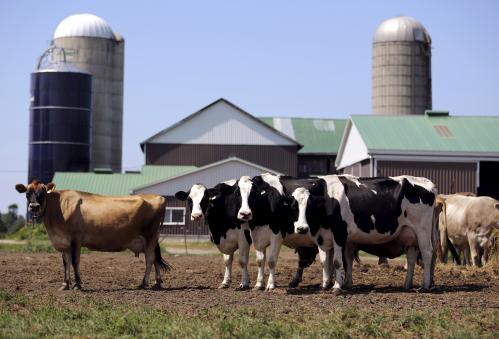President Trump is hailing the rebranding of NAFTA to USMCA (U.S. Mexico-Canada Agreement) as proof that his bombastic trade negotiating style “works” for America. Central to this claim is his assertion that the agreement will lead to greatly expanded exports of American dairy products to our northern neighbor. But is that really true?
We put aside the question of whether all the bluster and offense to our northern ally was necessary—and whether the damage to our longer-term relationship with Canada outweighs the benefits of expanded exports arising from the deal. Our purpose here instead is to update our analysis from this summer to provide some facts about how USMCA will affect U.S.-Canadian dairy trade.
Judging from the loud squeals from Canada’s dairy farmers that their government sold them down the river, one might think the deal had made some giant breakthrough to benefit Wisconsin’s dairy farmers. But that’s not really the case.
Before the deal, U.S. dairy exports to Canada accounted for slightly more than 3 percent of total Canadian dairy sales, although the fraction varies enormously by product type. The main constraint on U.S. exports to Canada has been that, in most categories of dairy products, once sales reach a magic threshold, a huge tariff kicks in, thereby precluding the possibility of sales above this amount.
The new deal raises this magic threshold before the high tariffs kick in to 3.59 percent of total Canadian dairy sales. Because high tariffs for exports above the quota remain in place, the new agreement will have only a modest effect on U.S. dairy exports to Canada.
USMCA also commits Canada to raising the support price for ultra-filtered milk—a protein-heavy concentrate used to make cheese and other dairy products—meaning that U.S. products will no longer have a price disadvantage in those categories.
The net effect of these changes is that the U.S. is now allowed to expand its sales to Canada by less than one percent of Canadian sales—or about 20 percent of current U.S. exports to Canada and about 0.2 percent of total U.S. dairy industry revenues.
In short, the new agreement is a tweak, not a major reform. Canadian and U.S. consumers will continue to suffer from highly protectionist dairy policies, with the U.S. continuing to export more dairy products to Canada than it imports from Canada. The benefits from the agreement for Wisconsin dairy farmers will be a drop in the milk bucket, lost in the annual variation in sales and production of milk products.
The authors did not receive any financial support from any firm or person for this article or from any firm or person with a financial or political interest in this article. They are currently not an officer, director, or board member of any organization with an interest in this article.
The Brookings Institution is committed to quality, independence, and impact.
We are supported by a diverse array of funders. In line with our values and policies, each Brookings publication represents the sole views of its author(s).






Commentary
Extra milk exports to Canada under Trump’s rebranded NAFTA will be a drop in the bucket
October 8, 2018